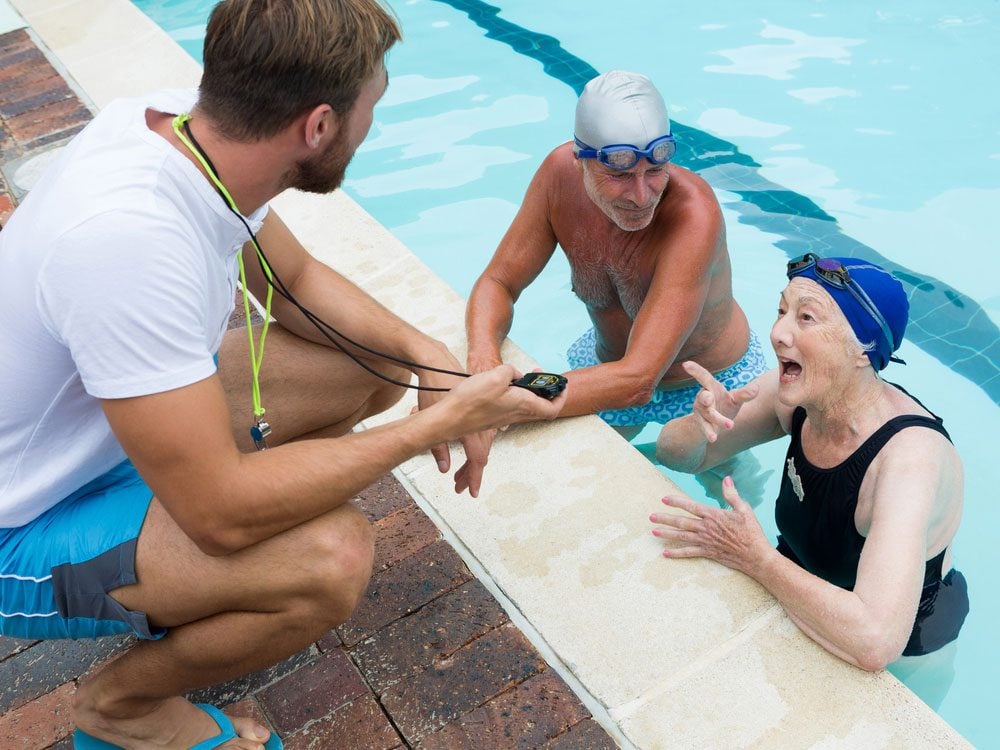
1. Avoid talking to lifeguards unless it’s absolutely necessary
They’re supposed to listen politely, but chit-chat is distracting. When staff are on the stand, they’re scanning the area and taking head counts every minute or so.
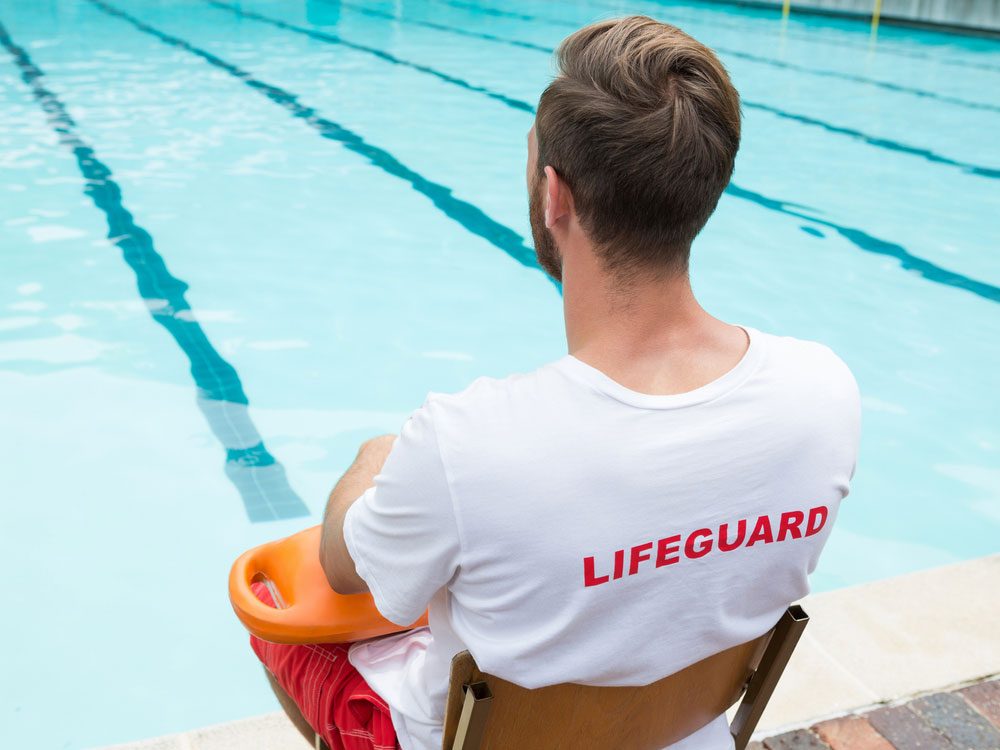
2. Lifeguards sometimes fall asleep on the job
It’s rare, but staff are only human. Staring at the water in the bright sun can be mind-numbing, and the combination of heat and dehydration is a recipe for fatigue.
Avoid dehydration by finding out how much water you should be drinking.
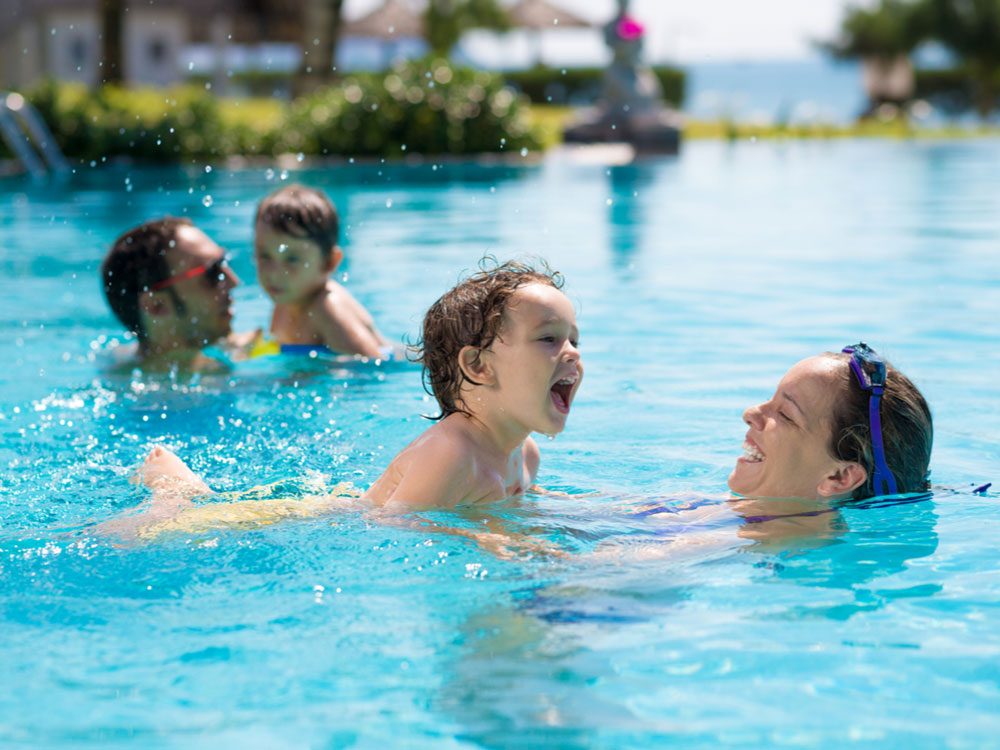
3. Parents need to pay attention to their charges
Lifeguards may be the first line of defence, but parents need to stay alert, especially when trained staff aren’t on the scene. More than a third of drownings of children under five happen when caregivers are present but distracted, according to the Lifesaving Society.
Here are seven essential steps of CPR everyone should know.
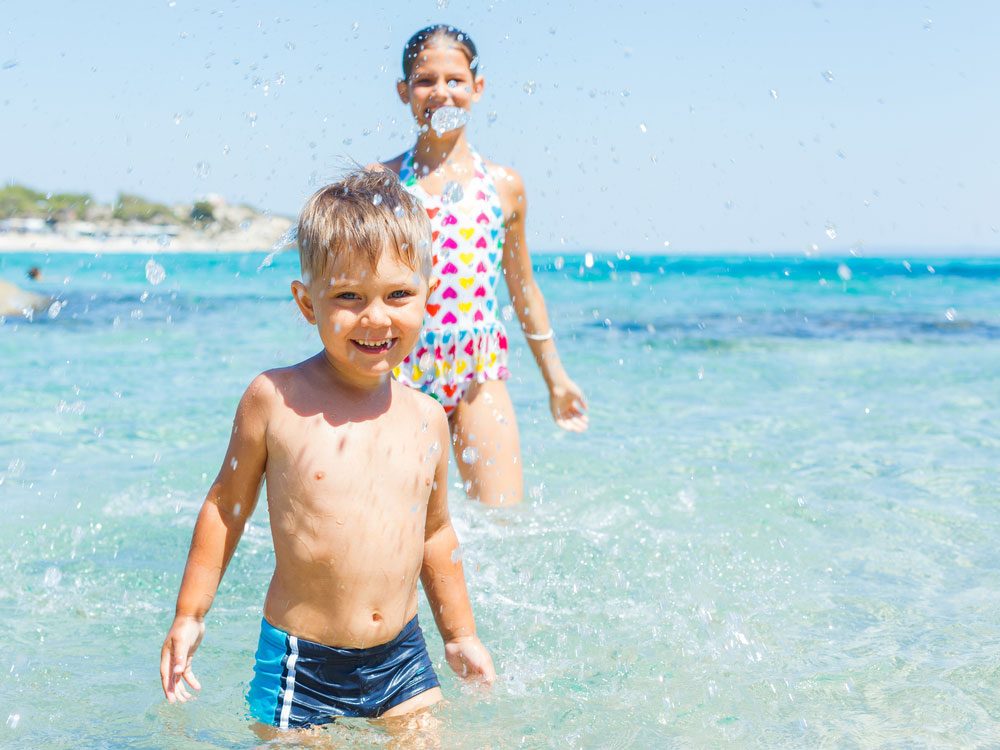
4. Don’t equate standing with safety
Many parents feel comfortable leaving their two- and three-year-olds in half a metre of water where they can touch the bottom. But with their top-heavy bodies, toddlers can’t necessarily right themselves if they lose their footing. “Always stay within arm’s reach,” says J.P. Molin, communications manager of the Lifesaving Society’s Ontario branch.
Check out these reasons your sunscreen might not be working.
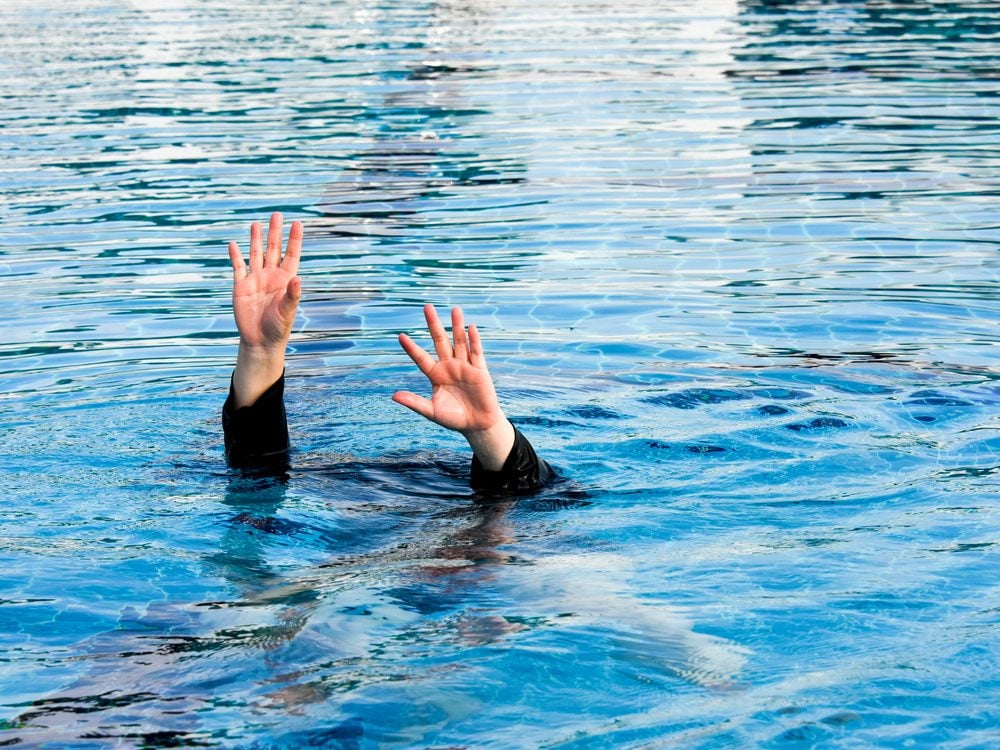
5. Drowning doesn’t look like flailing and splashing
It’s not like you see in the movies—drowning is often silent and swift. Lifeguards are trained to spot the subtle signs, which can include an upright posture, mouth bobbing in and out of the water and a glassy-eyed stare.
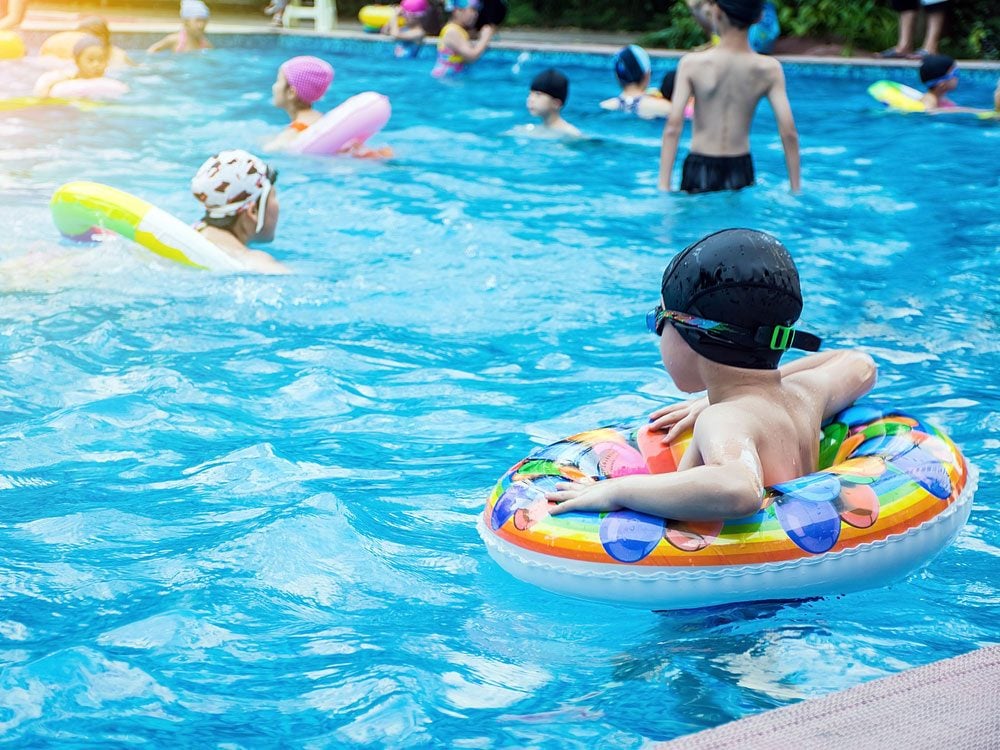
6. Hear thunder? It’s time to leave the pool
It doesn’t matter if no one’s seen any lightning—if you hear thunder, you’ll be ushered from the pool and indoors for at least 30 minutes. That’s how long Environment Canada recommends keeping swimmers out of any body of water after the last rumble.
Don’t miss the real reason your dog freaks out during a thunderstorm.
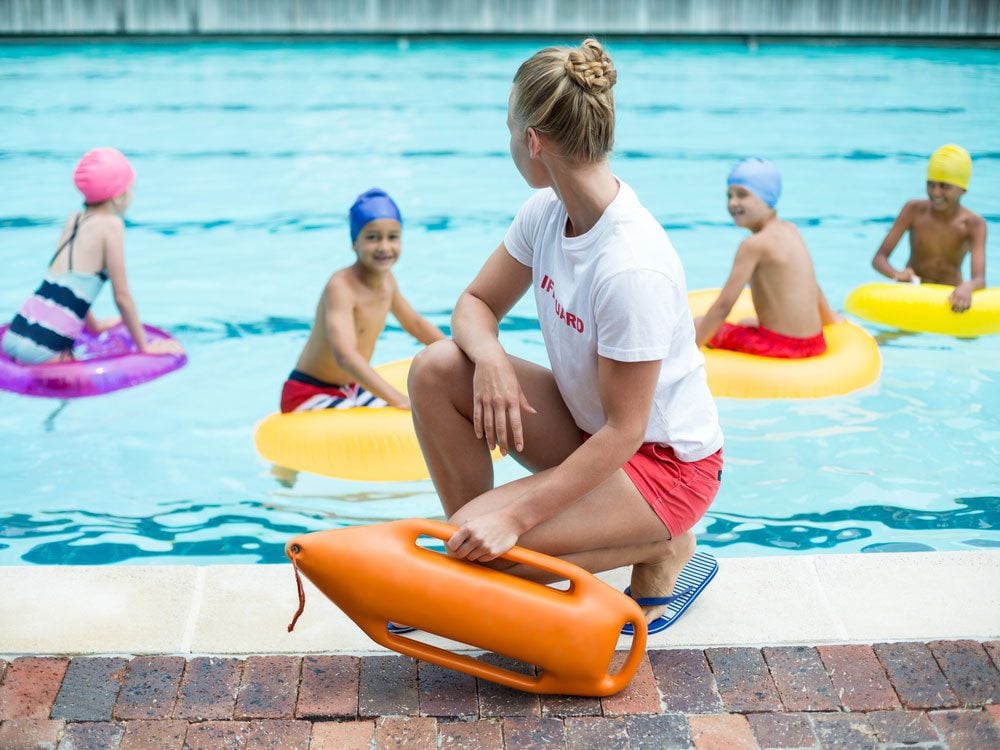
7. Some lifeguards are very young
They can be certified to work at public pools and beaches starting at 16, with wading pool attendants as young as 14.
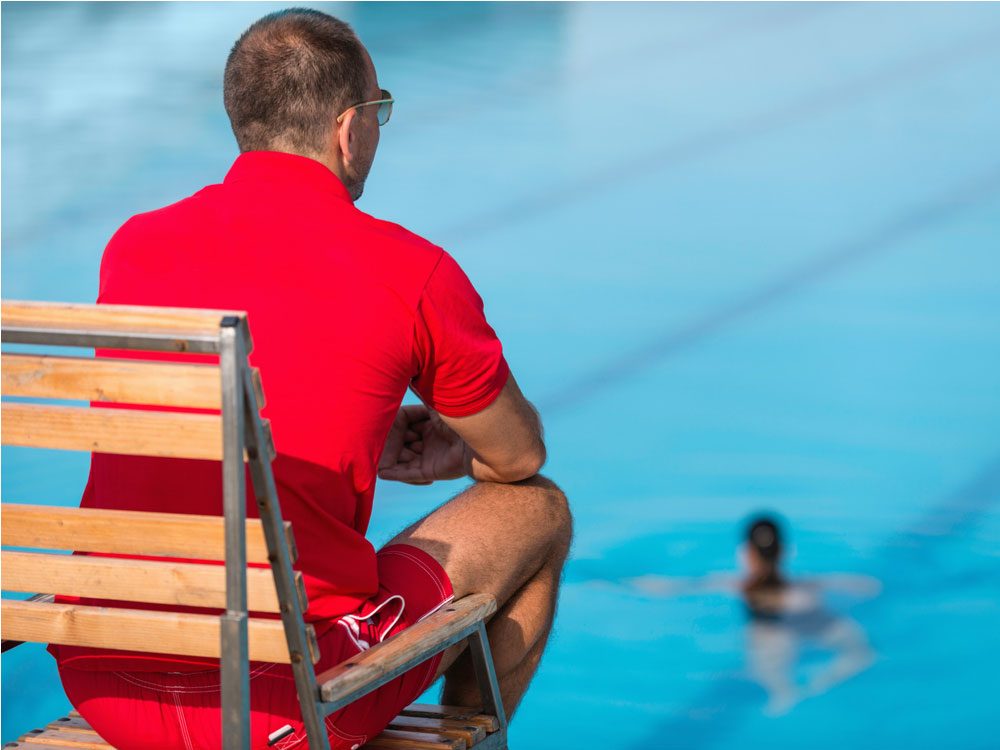
8. Lifeguarding is no joe job
Lifeguards undergo up to 100 hours of training by the time they start, and more for beach, water-park and managerial positions. They participate in emergency simulations multiple times a year and must recertify their credentials every two years.
Check out the world’s five best waterpark resorts!
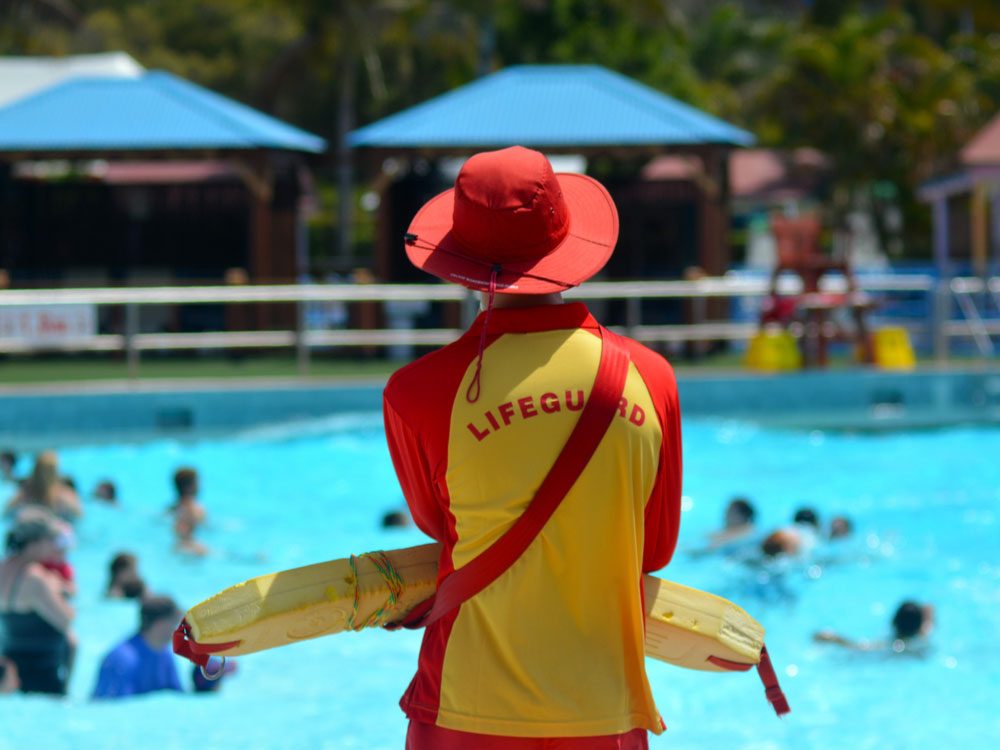
9. The job involves more than saving people
Lifeguards might also need to perform first aid for minor cuts and bruises and manage the pool filtration system.
Always make sure you always have these first aid kit essentials on hand.
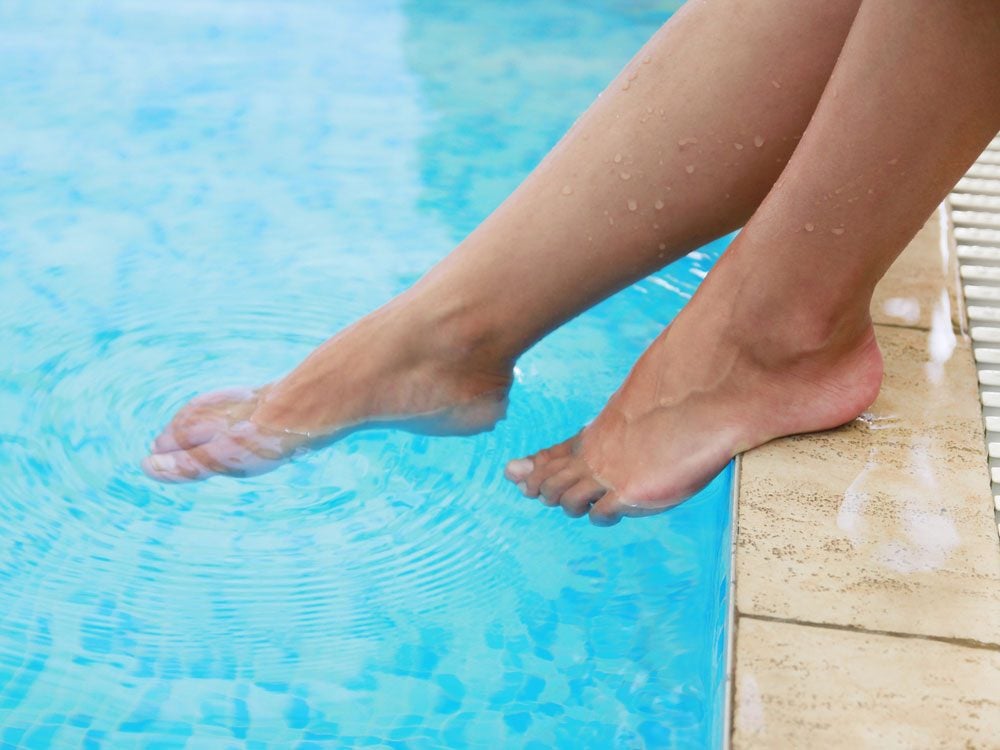
10. Never come to the pool with bare feet
The virus that causes plantar warts thrives in moist environments. Other skin infection–producing viruses and bacteria, like MRSA and molluscum contagiosum, also lurk in locker rooms and on personal items. Always sit on a clean towel and wear shoes or flip-flops.
Here are 11 reasons you should never make flip-flops your go-to summer shoes.
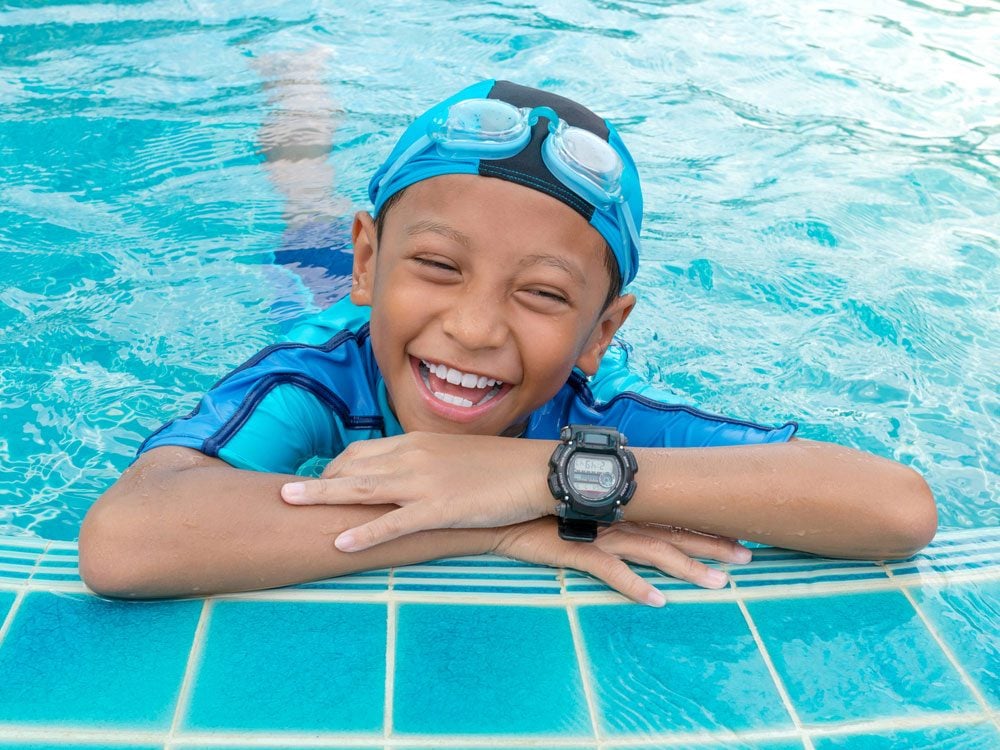
11. Don’t go around splashing with your mouth open
Researchers at the University of Alberta estimate that an average-sized public pool has up to 75 litres of urine in it. Yuck!
Check out the 15 skin cancer myths you need to stop believing right now.
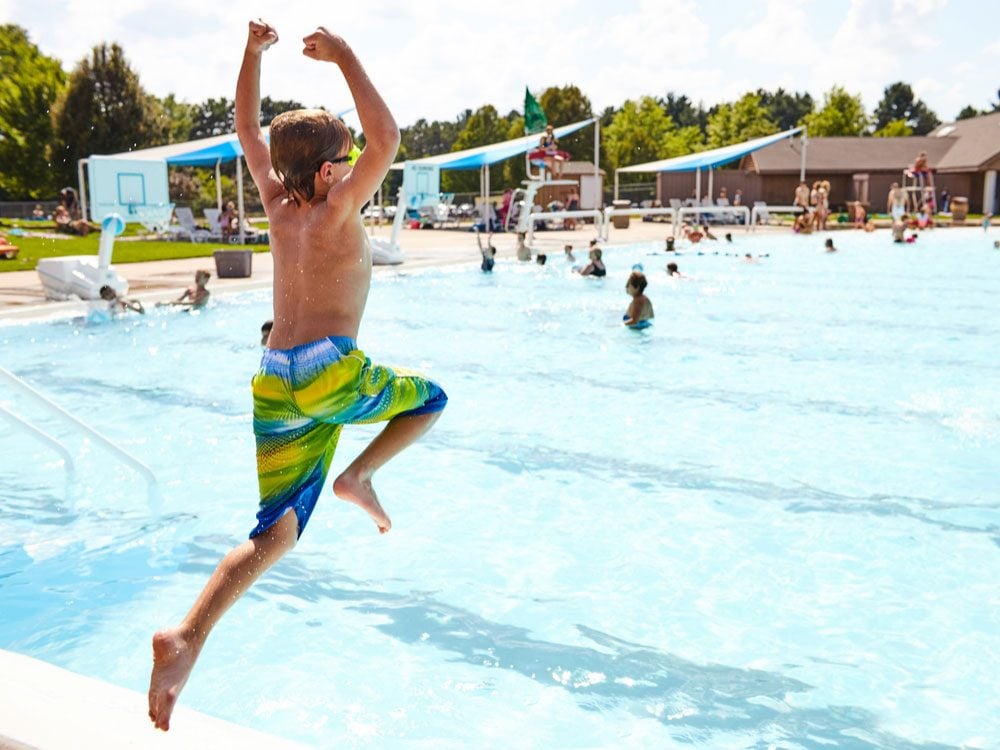
12. There are actually lots of reasons to avoid swallowing water
A 2017 U.S. study found that one in four adults reported that they would swim within an hour of having diarrhea, and 52 per cent rarely or never shower before going for a dip.
Discover the 11 public places with the most germs.
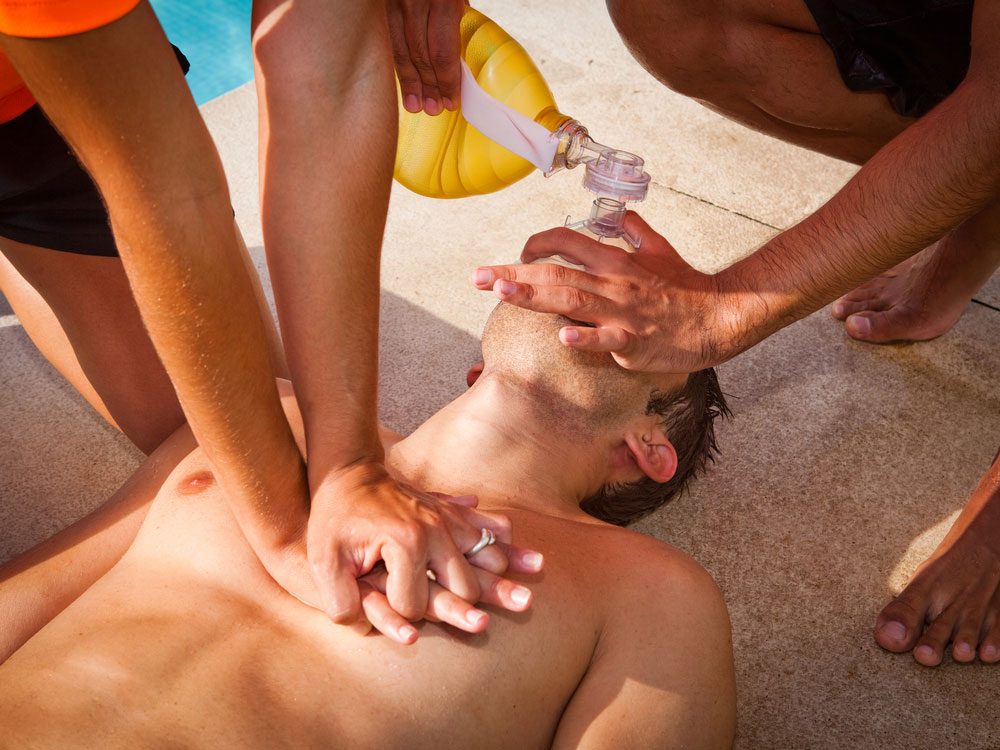
13. Your actions can save a life
If someone needs help, grab anything that floats. A frantic drowning victim will claw and climb on you in an attempt to get out of the water, pushing you under. Instead, throw something buoyant to them.
Looking forward to a swim? Check out Canada’s top 10 beaches!